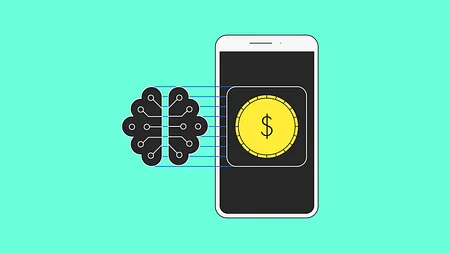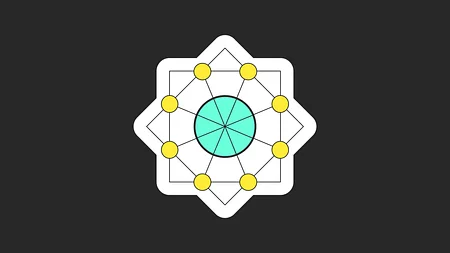Social media is not the answer to building your community

When brands decide it’s time to build their community, they dive straight onto social media. It makes sense right? Social media gives you a platform to instantly connect with a huge number of people all over the world. Social media gives you a shortcut to connect, share, get feedback, and generally tell people what you’ve got going on.
This is taken from our Unfiltered newsletter. Subscribe now for a no BS, uncensored analysis of fintech news and hot topics delivered to your inbox each fortnight.
Really great community building happens, when it becomes a part of your product and wider marketing teams’ priorities.
It’s why it gets wrapped up into one neat job title - Social Media and Community Manager. Engaging with your community is a given in a social media role. But it shouldn’t end there. Really great community building happens, when it becomes a part of your product and wider marketing teams’ priorities.
TL,DR: I think that absolutely everything you do should have community at the heart of it.
But it ain't easy. For every brand that gets it right, there’s probably another five that get it so, so wrong.
What can you do straight away?
Empathy at the core of your marketing plan. Simply put yourselves into the mindset of your customer. What’s important to them? What do they like? What do they not like? It sounds cheesy, but what are their hopes and dreams? Then refer back to those ideas whilst building your marketing plan.
Set your community goals. What does having a strong community look like to you? How are you going to reach them? What does success look like? If you’re a niche product, maybe it’s better to have a really strong engaged community of 1000 people, rather than aiming to reach a massive amount of people with a scattergun approach.
Back up your words with action. Everything you’ve said you will do, you actually have to go and do it. If you’ve committed to having a gender-balanced workforce, or being carbon net-zero by 2030, stick to it, and make sure it’s reflected in everything you do. Your community should and will hold you accountable.
Think about how your product design reflects your community. One of the main advantages with your product is that you own it. It’s yours, no one else's. Make sure it aligns with what’s important to your community, and the UX serves their needs. Does it reflect your values? Is there an opportunity to communicate with your customer and vice versa? Through your product you have direct access to your customers, you’re not relying on someone else's algorithm. Use that to your advantage.
Hedge your bets
I love social, it’s my job, but I’d be the first to tell you that you shouldn’t rely on it as the be-all and end-all.
The job isn’t done when you have 150,000 followers on Facebook.
It’s really not sensible to base your community strategy on a platform that has its own agenda, and can change how it operates with the flick of a switch. You just have to look at Facebook’s recent news ban in Australia to see what I’m talking about.
Channels come and go and at the end of the day, you own nothing.
Social should be a part, and a substantial one at times, of your community strategy, but it’s transient. Channels come and go and at the end of the day, you own nothing. You can’t export your LinkedIn follower data and engagements and take it with you, to the annoyance of your sales team.
By all means use them and use them well. The success of Clubhouse earlier this year proved that people want to meet, chat, and share ideas on online forums, but its subsequent rapid decline in popularity demonstrates how quickly attitudes can shift.
Learn from those doing it well
A fintech I think gets it more right than wrong is Freetrade, who I believe hold most of these values to heart when it comes to their community.
They have a clear mission - which is to get as many people interested in and starting to invest, in a responsible manner. They do this by maintaining an active, in fact very active, presence on social, engaging with their community on a daily basis with fun activities and challenges, as well as taking on the more serious side of investing, but they’ve also built community into the heart of their product with their in-app refer-a-friend scheme, which rewards both the referer and the referee with a random free share when they first make an in-app deposit.
They also take their community along for the ride with them, asking them for feedback into what should be on their product roadmap. They can then communicate directly in-app, without having to rely on email or social comms. By doing this they’ve built up a loyal following of investors, who are ready and willing to tell their friends about Freetrade. One that will no doubt move with them wherever social heads in the next few years.
Freetrade was last valued at $366 million.
Here are my three top tips to consider when building your community
If you take anything away from this, here’s three things I firmly believe in when it comes to community building:
- Figure out who you’re talking to and talk to them like they’re adults. If you were sat at a dinner party next to Brian Cox (the physicist or the actor) what would you ask them? You probably wouldn’t ask them “what’s your favourite colour?”. When building a community it’s imperative that you know who your followers are and at what level you need to talk to them, without having to rely on assumptions. At 11:FS we’re lucky to have a very clever community of people who love and are passionate about fintech. Which is great, as you can rely on a high level of passion and engagement in your conversations, but you should also never leave anyone behind. Maybe 99% of your community knows what DeFi is, but to me, that means there’s 1% that don’t that you’re potentially leaving behind. Be clear, engaging, and explanatory, without being patronising.
- Take people on the journey with you - even when it’s bumpy. With a wealth of information at their fingertips, customers are becoming more-and-more discerning about what products they buy and what services they use. This should be seen as a good thing, but some brands still insist on using smoke and mirrors to try and hide things from their customers. Don’t. If you make a mistake, and you will make a mistake, put your hands up and own it. Share with your community what happened, what you learned and what you're going to do differently next time.
- Just be really good at what you do. This should be really obvious, but you’d be surprised at how many people rush to market and try to build a following without actually figuring out if they’re actually any good at what it is they’re meant to be doing. I used to work in the music industry and would often hear young bands ask, how do I get a record deal? When the question should really be, how do I write good songs? If you do good stuff, people will take notice, they will follow what you do, and then they’ll share it with their friends, and your community will grow. It’s really that simple.
If you do good stuff, people will take notice, they will follow what you do, and then they’ll share it with their friends, and your community will grow. It’s really that simple.
My unfiltered opinion
Community building is a long, ever-changing challenge for businesses which makes it a daunting prospect. I really think if you stick with the basics, find out who your audience is, how to talk to them, take them on the journey with you, and think about them when making all marketing and product decisions, and become really good at what you do, you’ll get it right more often than you get it wrong.




